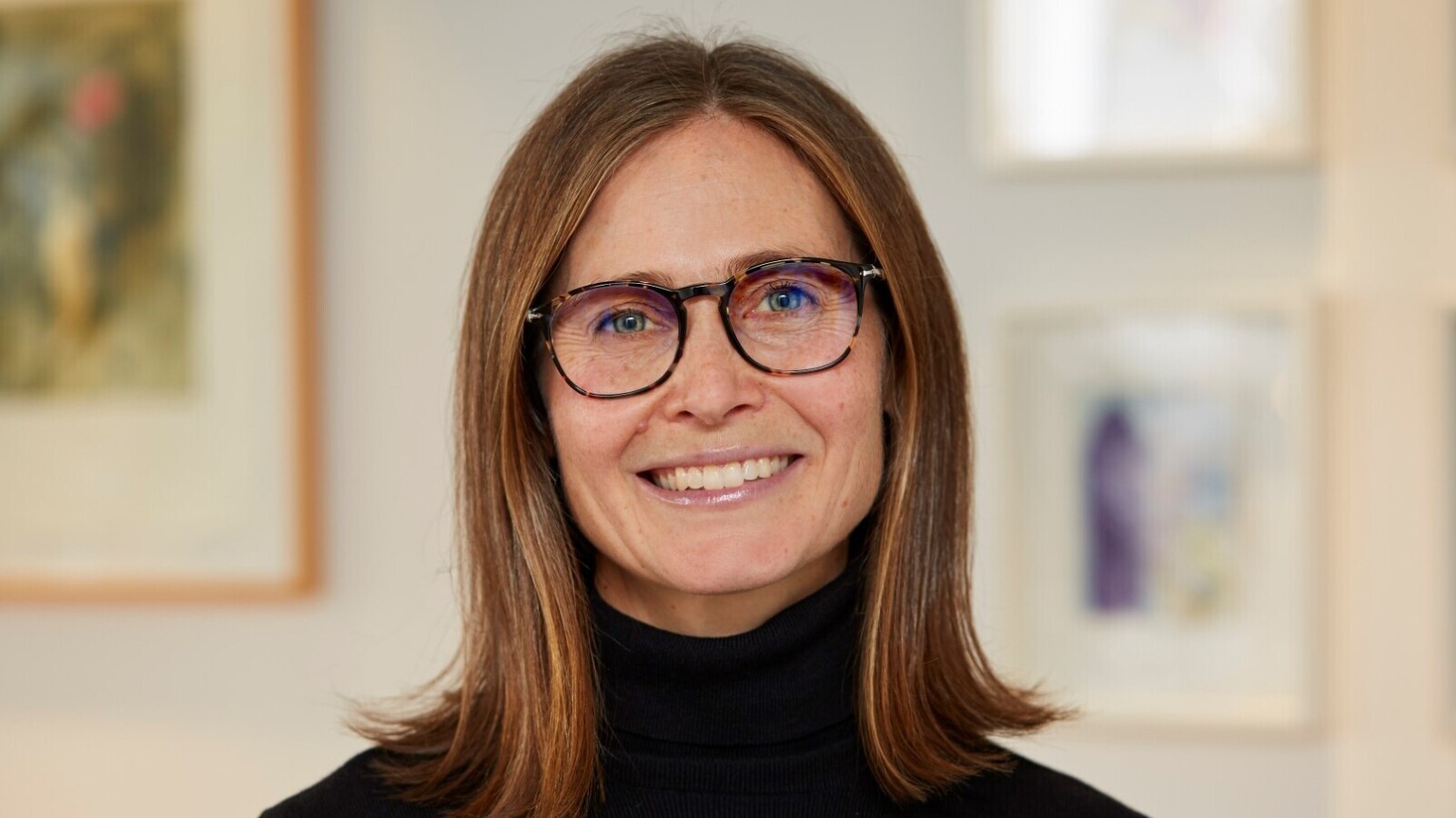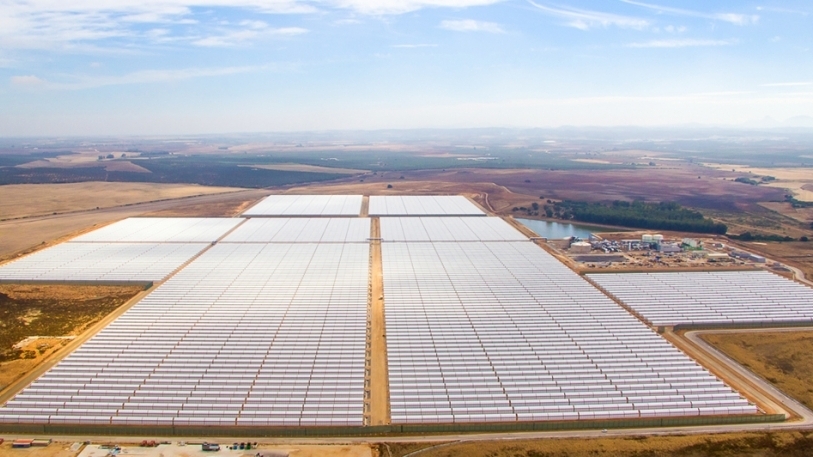
AP6’s green chief on investment choices, pressuring managers and mitigating climate risks
AP6's Anna Foller sits down with NZI to discuss the Swedish pension's investment portfolio, sustainable strategy and key issues that keep investors awake at night
The Principles for Responsible Investment group, the UN-backed coalition that pushes for sustainable investment standards in investment strategies, recently held its annual conference in Tokyo, Japan.
One of the event's main speakers was Anna Foller, since July 2021 head of sustainability at the Sixth Swedish National Pension Fund (AP6), a $6.3 billion pension fund which solely invests in private equity, as it is instructed to do so under a Swedish law that governs the fund’s operations, the Sixth Swedish National Pension Fund Act.
Following the conference in Japan, Foller made time to catch up with Net Zero Investor to share her views, experience and strategy in more detail.
PRI In Person in Tokyo earlier this month, full house, dozens of panel discussions. What was the key take-away for you?
As current chair of the PRI private equity advisory committee PEAC, I was particularly glad that the private markets’ perspective was elevated in the conference programme this year. I had the opportunity to share experiences from leveraging stewardship in private markets in a break-out session panel. The ownership structure in private equity, it is an outsized opportunity to influence sustainable practices in portfolio companies.
Net Zero Investor's Annual Conference | 11th December 2023 | London
Through alignment of interest between asset owner, board and management, portfolio companies can significantly improve during the ownership period, while unlocking value for the company, owners, investors, and contributing to real world impact. Building upon industry standards and tools, such as the PRI/ILPA RI DDQs for LPs as well as the EDCI, and taking into consideration the most material sustainability related impacts in their private equity allocation, LPs can contribute to strengthening sustainable practices in a tranche of the market which not only is considerable in terms of capital and impacts, but also contains many of the listed companies of the future.
One of the main themes at PRI's conference this year was the level of engagement between investors and their investee firms. How hard should asset owners push? How do you drive sustainability and net zero demands throughout your portfolio, those sort of questions. What is your take there?
As a state pension fund with a long-term mandate, integrating ESG and acting on systematic sustainability issues are intrinsic parts of how we operate. We identified ten years ago that sustainability and ESG integration is key to protecting and increasing the value of our investments and we have been working to refine our approach since. Our way of driving sustainability standards throughout the portfolio is through an established process of assessment, dialogue, and feedback, supported by concrete targets, incident reporting channels and monitoring.
Can you elaborate on that, please?
Sure, AP6 invests only in private equity across buyout, venture, and growth. Investments are made through fund commitments and co-investments. Stewardship, or 'maximising overall long-term value, including the value of common economic, social and environmental assets on which returns, and client and beneficiary interest depend' as the UNPRI puts it, is a natural fit for the private equity asset class with its often control investments and alignment of interests between owner, board, and management. As a limited partner investing indirectly in private equity funds managed by a general partner, there are several means of seeking change and impacting sustainability standards in the investment.
So in order to seek that change and impact standards, which tools do you use to implement your vision and strategy?
Our main tools for stewardship and engagement are the annual ESG assessment process involving an evaluation of GPs integration of ESG pre-investment and during ownership, as well as feedback on performance and sharing of best practice. Also, a long term commitment and action on three specific focus areas; climate, gender equality and diversity, and human rights.
"Systematic sustainability risks, as well as industry inherent sustainability risks, cannot be mitigated by separate actors alone."
Examples of activities related to a focus area are assessing practice, sharing results, and arranging round-table discussions to share and learn. We recently carried out a pilot study around human rights due diligence in the portfolio and organised a round-table event to share the results and discuss challenges and best practices.
Earlier you mentioned to me AP6 recently sharpened its sustainability ambition?
Yes, specific sustainability targets were recently approved by the board of directors, reflecting AP6’s role as an indirect investor. And systematic sustainability risks, as well as industry inherent sustainability risks, cannot be mitigated by separate actors alone. We need to work together, pool resources, find efficiencies, and embrace standards and subject matter expertise to increase our leverage and manage impacts.
Obviously you have a fiduciary duty under Swedish law. How do you balance the successful execution of that task versus driving climate-focused investments and increasing your impact investing activities?
We have a long-term assignment to contribute to a pension system that will safeguard pensions for many generations to come, generations that will need both a pension and a liveable planet. Climate change is threatening both, which is why contributing to net zero is so crucial for AP6 and other pension funds. As indirect investors in private equity, AP6 can achieve net zero if the managers we invest with decarbonise their portfolio companies.
Please explain this in a bit more detail.
Climate change and the related transition in society induces risk and disruption to all economic activity needed to generate returns for the pension system, but the transition can also generate opportunities to create returns. Identifying and managing climate change related risks and opportunities are therefore key for a pension fund.
However, as climate change poses a market wide risk and impacts investment portfolios on a greater scale than a single company, sector, or geography, it cannot only be handled in relation to a specific investment. There is therefore a driver for pension funds, and other investors alike, to act to mitigate climate change, beyond the portfolio perspective, while keeping the focus on the assignment to create returns for the beneficiaries.
"As climate change poses a market wide risk and impacts investment portfolios on a greater scale than a single company, sector, or geography, it cannot only be handled in relation to a specific investment."
So this means a lot of pressure on managers?
As indirect investors in private equity, we primarily affect the composition of the portfolio through our manager selection. When managers we invest with share our view on climate and have an ambition to align investments with net zero, we can move our investment portfolio towards net zero. Many of the managers that we invest with have set, or committed to setting, climate targets aligned with science and are now working to operationalise these targets through decarbonisation of portfolio companies.
I take it, given what you just said, that you set specific portfolio targets.
Yes, our climate targets are that fund managers representing 65 (100) percent of invested capital are to have set or committed to setting climate targets aligned with the Paris Agreement by 2025 (2040). The status as per December 2022 is 47%. Also, holdings representing 65% percent of invested capital to report GHG emissions by 2025. The status here was 52% in December of last year.
Let’s dive a bit deeper into your sustainable investment portfolio, if you do not mind. What is the key emphasis in your portfolio?
Our thesis is that sustainability and ESG integration is key to protecting and increasing the value of our investments. As indirect investors in private equity, our primary tool for responsible investing is careful due diligence of GPs policies and processes for sustainability and ESG integration before investment, followed by monitoring and engagement in line with our targets after investment. Through this systematic, long-term approach to selection and monitoring, we can deliver on our assignment to create long-term, high returns for the pension system, while investing responsibly through the integration of ESG.
Which sectors and investment targets are we talking about?
We are an indirect investor in European and US buyout, venture-, and growth capital. The main industries in AP6’s portfolio are IT, healthcare, and industrials. As we invest across industries and geographies, sustainability impacts vary among the underlying portfolio companies while some sustainability challenges and opportunities are relevant for all companies.
"As indirect investors we want to invest with GPs that have the relevant policies, processes, and resources in place to identify and manage sustainability impacts, risks, and opportunities."
In our annual ESG assessment of the portfolio, we observe a high level of awareness of sustainability related challenges as well as a high level of maturity in terms of processes to manage sustainability related issues throughout the investment value chain. There is also an ambition to raise standards continuously and we note that over time, all managers that we invest with strengthen their approach to sustainability, in due diligence as well as during ownership.
But interestingly, no specific green investment targets?
No, we have currently no specific allocation towards sustainability themed investments, we have observed an increased interest among GPs to invest in companies that address sustainability related challenges through their business model, products, or services, and which can profit from a sustainability tail wind. We expect to see more of this going forward.
Let's briefly touch on climate risks, another major issue many investors are struggling with. Physical climate risks and future risks, and how to assess, measure and mitigate them, are increasingly dominating investors' agendas.
The main sustainability related challenge for all investors is that they are facing systematic sustainability risks, notably climate risk and nature related risks and dependencies, that challenge business as usual. To identify, quantify and assess such risks is a challenge, due to limitations of e.g., resources, data, tools, and experience.
A private equity specific challenge relates to non-convergence around due diligence and disclosure initiatives and standards. Aligning with frameworks and standards developed for the industry, such as the ILPA/PRI ESG DDQ or the ESG Data Convergence Initiative (EDCI) could unlock resources for stewardship and engagement, and value creation, both at the GP and LP level.
Finally, one topic that has been on many investors' and managers' minds recently is the strong anti-ESG wind that is blowing through some parts of the world's largest market, highly relevant for you since AP6 is an investor in US buyout, venture-, and growth capital. So do these anti-ESG sentiments impact your investment choices in any way? Or the corporates and managers you teaming up with?
Yes, we only invest with managers that have a defined approach to responsible investment and integration of ESG, with an ambition to strengthen process and targets over time. For AP6, integration of ESG is an additional way of identifying risks and opportunities that can impact our returns. For us it is an evident part of our fiduciary duty. The law that governs AP6 also requires us to invest responsibly through the integration of ESG. In private equity the number one driver for ESG integration is value creation and value protection.
So, for the U.S.-based PE funds that we invest with, ESG is a means to harness additional possibilities, a means to support companies in remaining relevant for their consumers and customers, let alone for mere survival in a market where behaviours, business models and availability of resources are changing. That said, US PE firms need to navigate the anti-ESG debate and the legal environment that they operate in.
Also read
What can net zero-minded investors still achieve in a ‘hot house’ world?



